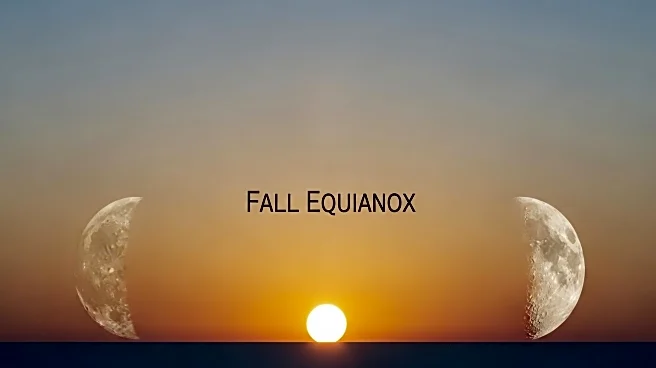What's Happening?
The first day of fall, known as the autumnal equinox, has arrived for the Northern Hemisphere. This event occurs when the sun is directly above the equator, marking a transition in seasons. The equinox officially took place at 2:19 p.m. EDT, as reported by USA Today, with the sun positioned over a point in the equatorial Pacific Ocean. The National Oceanic and Atmospheric Association (NOAA) explains that during this time, the Earth has no tilt toward or away from the sun, a phenomenon that also occurs during the spring equinox in March. The equinox is a global event, occurring simultaneously across different time zones, such as 11:19 a.m. PDT in Atlanta. For the Southern Hemisphere, this marks the spring equinox. The term 'equinox' translates to 'equal night' in Latin, although daylight slightly exceeds 12 hours from sunrise to sunset.
Why It's Important?
The autumnal equinox signifies a shift in seasonal patterns, impacting various aspects of life and industry. For agriculture, it marks the beginning of harvest season, influencing crop yields and food supply. Retail and consumer markets often see changes in product offerings, with fall-themed items becoming prevalent. Additionally, the equinox affects energy consumption patterns, as daylight hours decrease leading up to the winter solstice. This can result in increased demand for heating and lighting, impacting energy markets and policy decisions. The equinox also holds cultural significance, with many societies celebrating harvest festivals and other seasonal traditions.
What's Next?
Following the equinox, days will progressively shorten until the winter solstice on December 21, which is the shortest day of the year. This transition may prompt adjustments in various sectors, including agriculture, energy, and retail. Meteorologists note that while astronomers mark the equinox as the start of fall, meteorological fall began on September 1, based on a calendar system that divides the year into four three-month periods. This system aligns more closely with climate patterns, potentially influencing weather forecasts and climate-related planning.










